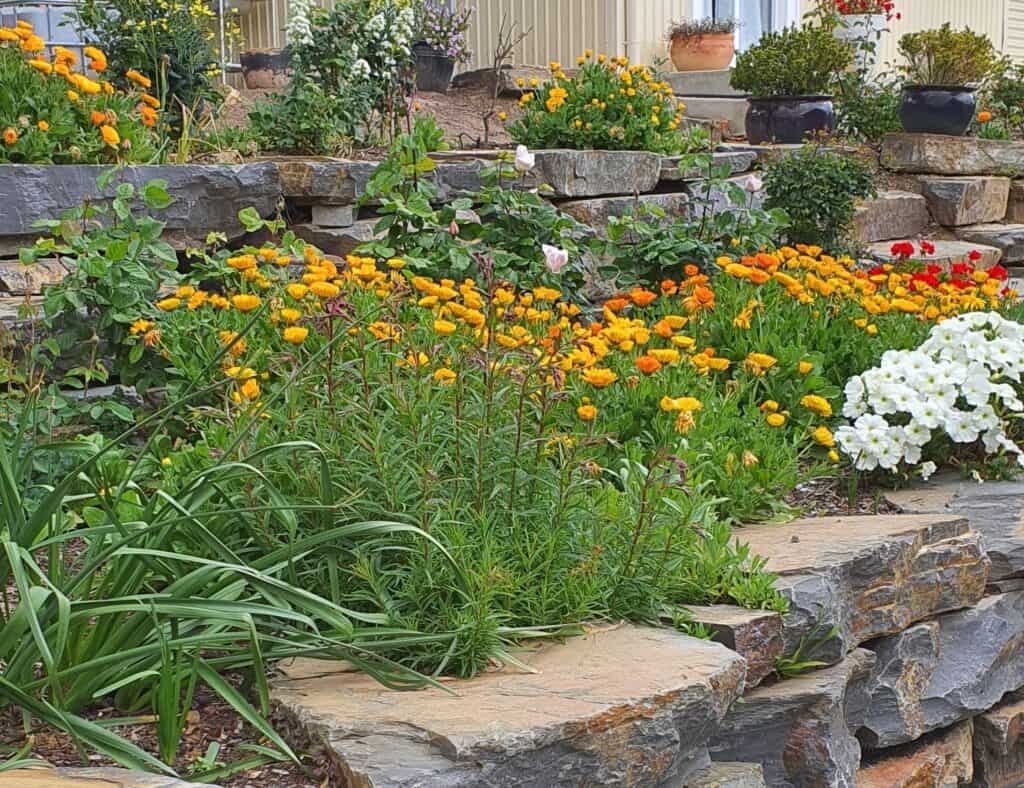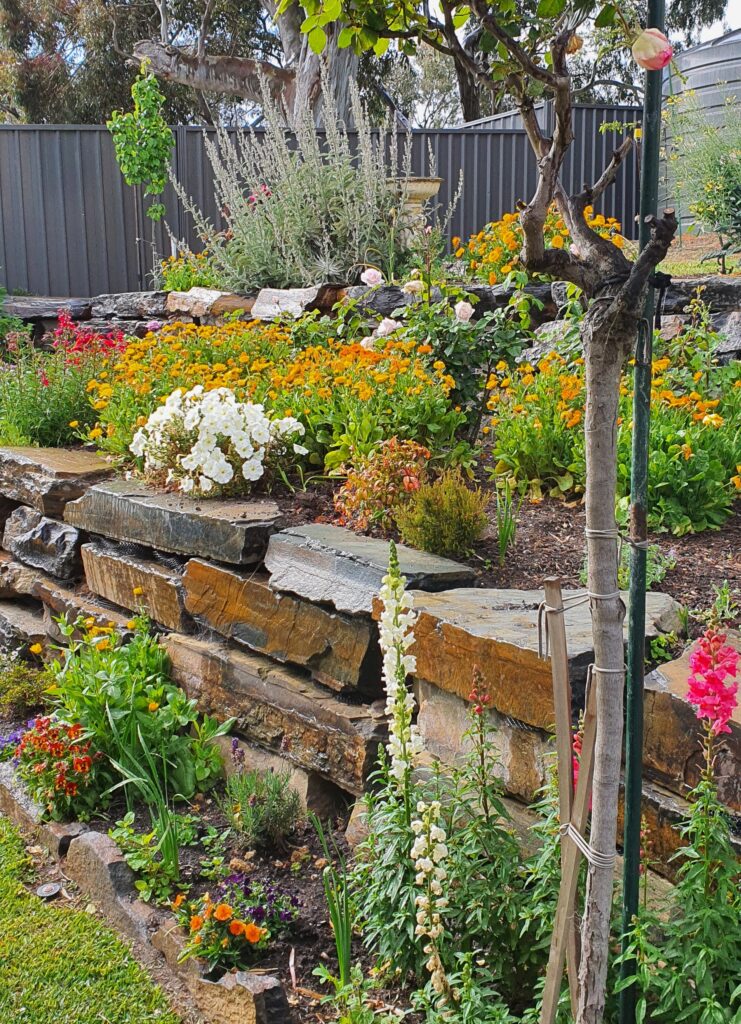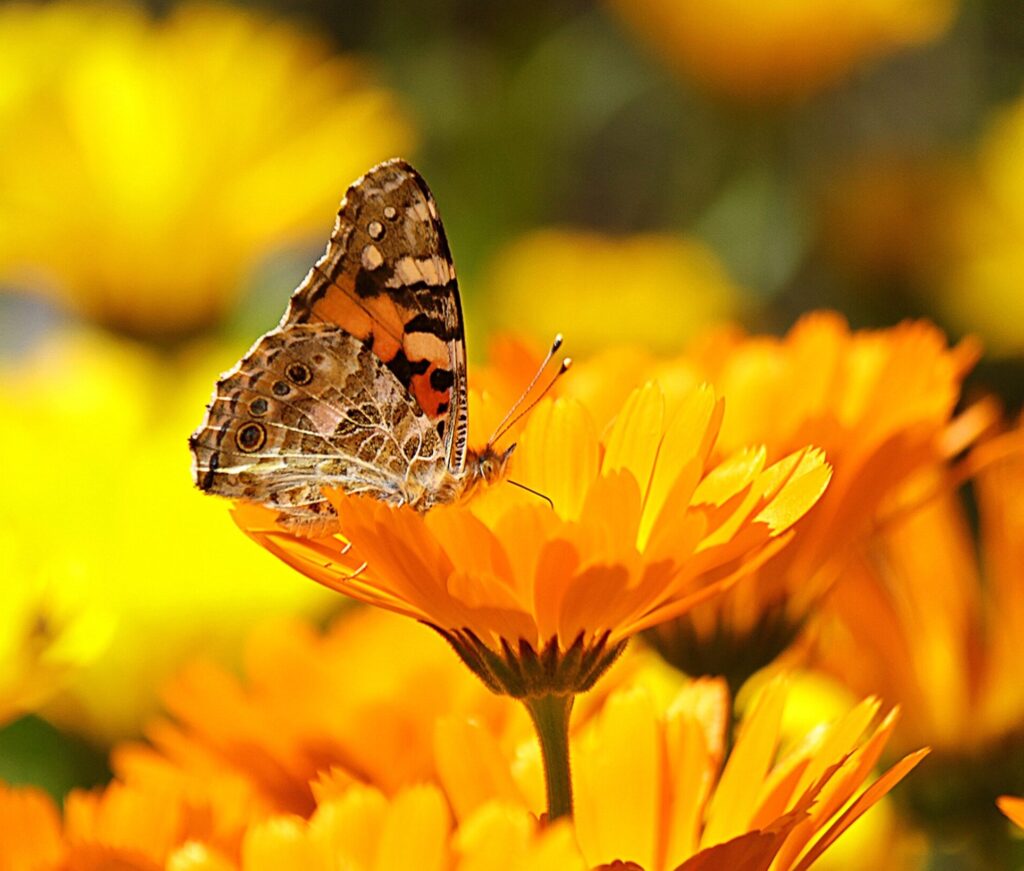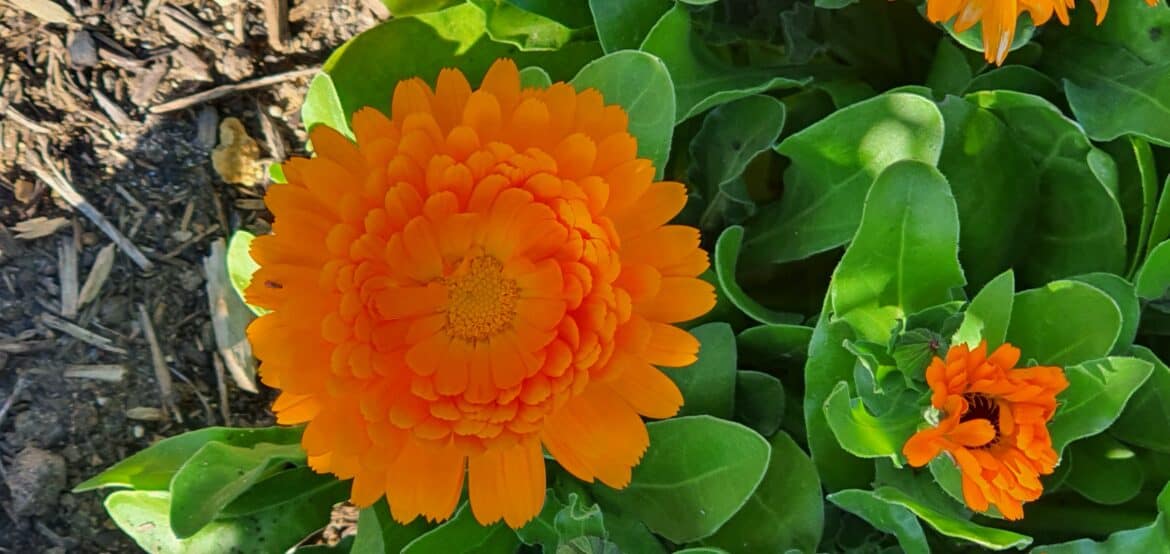Calendulas are those beautiful big orange or yellow, daisy-like flowers often mistaken for marigolds. They are not marigolds but belong to the same family: Sunflowers! Calendula belong to their own smaller genus of which there are several varieties. They are so easy to grow that any unskilled gardener will be highly successful.
What do Calendula flowers need to grow?
- Sunny position
- Good friable and nutrient-rich soil (although I have had them growing in clay and poor soil, the flowers are just smaller. That’s how tough they are!)
- Water well or good rain-fall while establishing
- Room to spread
- No fertiliser required
- Tolerates light frost
- Plant seeds in late Winter to early Spring

Benefits of Growing Calendula flowers
- The flowers are edible and can be added to salads, rice dishes, soups… in fact anywhere that a bit of color and extra nutritional content is desired.
- Containing Vitamin C, Vitamin A and anti-oxidants, Calendular flowers can be eaten raw or cooked.
- Even though Calendula are annuals, you never have to buy them again, they are guaranteed to come back every year on their own, quickly filling up any bare patches….you can be pretty ruthless thinning them out if necessary.
- If you like making your own home remedies, grow Calendula flowers. The petals are used in ointments, salves and oils to relieve itchy, inflamed skin conditions. Sunburn is relieved and nappy rash improved with these amazing flowers. I have so many Calendula in the back garden that I will be experimenting with these recipes next Spring and Summer. Stay tuned!

Companion Planting
Entomophily is the fancy term for insect pollination and Calendula flowers are great attractors of bees and butterflies. They also protect your other plants from aphids, thrips and other nasties by virtue of the fact that these pests prefer calendular flowers.
The good guys: lace-wings, lady-birds and hover-flies that eat pests are also attracted to Calendula where they feast on the pests. An interesting system develops around these flowers, ultimately protecting the rest of the garden. This is why they are the number one companion plant.


